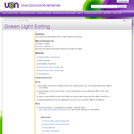
This activity will help students learn to make healthy food choices.
- Subject:
- Arts and Humanities
- Life Science
- Nutrition
- Material Type:
- Lesson Plan
- Provider:
- Utah Education Network
- Date Added:
- 10/22/2013

This activity will help students learn to make healthy food choices.
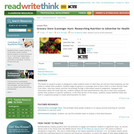
After researching nutrition and analyzing food advertisements, students work in cooperative groups to create their own advertisements for food products.
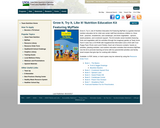
Garden-themed nutrition education kit that introduces children to six fruits and vegetables. Includes seven booklets, featuring three fruits and three vegetables, with hands-on planting activities, a CD with supplemental information, and a DVD with Cool Puppy Pup’s Picnic and Lunch Parties.

This resource is a video abstract of a research paper created by Research Square on behalf of its authors. It provides a synopsis that's easy to understand, and can be used to introduce the topics it covers to students, researchers, and the general public. The video's transcript is also provided in full, with a portion provided below for preview:
"Our gut microbiome has far-reaching effects on our bodies - including on our brain. Gut microbes primarily communicate with the brain via metabolites that are carried in the bloodstream. However, to influence neuronal cells, these metabolites must first interact with the blood-brain barrier (BBB). While diet influencing the brain has been well documented, the impacts of specific metabolites on the BBB are not. To close this gap, researchers combined cell culture and mouse models to examine two metabolites: trimethylamine N-oxide (TMAO) and its precursor trimethylamine (TMA). In humans, both TMAO and TMA are generated by the microbiota from dietary fish and seafood. At physiologically relevant concentrations, TMAO enhanced the integrity of the BBB and protected it from inflammatory damage. In fact, long-term exposure to TMAO in mice protected cognitive function from inflammatory challenge. In contrast, TMA impaired BBB function and disrupted the tight junctions between endothelial cells..."
The rest of the transcript, along with a link to the research itself, is available on the resource itself.

This resource is a video abstract of a research paper created by Research Square on behalf of its authors. It provides a synopsis that's easy to understand, and can be used to introduce the topics it covers to students, researchers, and the general public. The video's transcript is also provided in full, with a portion provided below for preview:
"B-cells are a type of white blood cell that play an important role in the immune system, and some of these cells secrete a protein known as IL-35, which has been shown to regulate inflammation. Because the microorganisms living in the digestive system can have critical effects on the immune system of their host, scientists recently set out to uncover the link between these microbes and IL-35 production. The team found that certain microbes inhabiting the guts of mice, such as Lactobacillus bacteria, can promote the generation of IL-35-secreting B-cells and that they do this by producing 3-indoleacetic acid (IAA) in the presence of lipopolysaccharides. They also found that IL-35 may help prevent mice fed a high-fat diet from becoming obese and observed lower levels of IAA in obese mice than in nonobese mice..."
The rest of the transcript, along with a link to the research itself, is available on the resource itself.
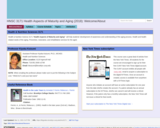
Development of awareness and understanding of the aging process. Health and health-related needs of the aging. Preventive, restorative, and rehabilitative services for the aged.
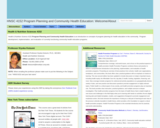
An introduction to concepts of program planning for health education in the community. Program development, implementation, and evaluation of currently functioning community health education programs.

Examination of experimental design as applied to nutrition research, including intervention, observational, survey, and animal models. Development of research topics; methods of data collection; interpretation and presentation of results; ethical considerations; application of principles for development of research proposals and evaluation of the nutrition literature. (Prerequisites: advanced coursework in Nutrition and a course in Biostatistics)
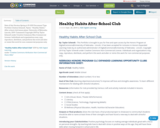
Date of this Version
Spring 4-29-2019
Document Type
Portfolio
Citation
Schendt, Taylor. “Healthy Habits.” After school club lesson plans. University of Nebraska-Lincoln, 2019.
Comments
Copyright 2019 by Taylor Schendt under Creative Commons Non-Commercial License. Individuals and organizations may copy, reproduce, distribute, and perform this work and alter or remix this work for non-commercial purposes only.
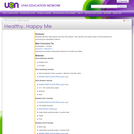
In this lesson students will learn about germs and how they spread. They will learn the proper steps to hand washing and preventing the spreading of germs.
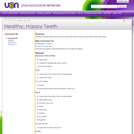
In this lesson students will learn about the right way to brush their teeth and why its important to keep them clean.
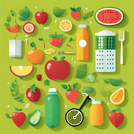
This lesson includes various activities and tasks directed at A2 English learners. Students will use their background knowledge about "Healthy Lifestyles" and expand their understanding through a range of proposed tasks. This lesson will help them develop critical thinking about maintaining a healthy lifestyle while improving their language skills in writing, speaking, listening, and reading.

Students investigate how the major body systems (digestive, circulatory, respiratory, muscular, skeletal, and nervous) function during a traditional childhood tag game. As a culminating activity for the 5th grade Passport Lessons, students engage in project-based learning (PBL) to create a Healthy Living Plan and share research findings regarding the benefits of eating healthy foods and vegetables on the major body systems.

In this module we will introduce you to concepts such as food security, food insecurity, nutrition security, livelihood security, food policies and programmes and the role of stakeholders and facilitators. You will gain the knowledge and skills required to gather information on many different levels, from the macro to the micro level. You will also, in time, become equipped to analyse community and household needs, understand the implications of policies and strategies for communities and households. You will eventually be able to report on the community situation regarding food insecurity and related issues and to advocate and request assistance for intervention.
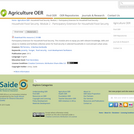
This unit we focus on household food security and what the effect of food insecurity will be on households. These days the concepts nutrition, nutrition security, livelihoods and household livelihood security are also used when the bigger picture of household food security is discussed.
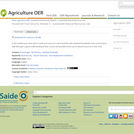
In this module your main task is to plan and carry out a set of activities with selected households in the community to help them gain a good understanding of their current and possible future use of natural resources in their area.
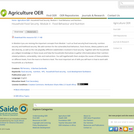
In Module 4 you are revising the important concepts from Module 1 such as food security,food insecurity, nutrition security and livelihood security. We add nutrition for the vulnerable,food behaviour, food choices, dietary patterns and diet diversity, as well as the role played by different stakeholders involved in food security. Together with the households you will gain knowledge on these issues and help the households themselves to gather information about their nutrition related problems, vulnerability, risks and malnutrition. You will together with them analyse the causes of these problems on different levels, from the macro to the micro level. The most important set of skills you will learn is how to work with households as a facilitator.
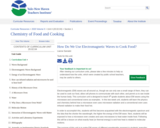
The purpose of this unit is to make EM waves of different wavelengths apparent in students’ everyday lives. This will be accomplished by using devices that students are already familiar with and most likely take for granted –microwave and conventional ovens. Students come into the classroom with the understanding that the microwave oven makes their food hot but without knowing why or how this happens at a molecular level. This unit will give the students real-world context for applications of microwaves and infrared waves.
Understanding wave properties and EM waves is relevant to students because EM waves are used for many purposes and surround us every day. These EM waves are used for technology. There are valid health and safety concerns with exposure to some higher frequency waves, such as ultraviolet radiation, x-rays, and gamma rays. This unit will explore why the microwaves in the microwave oven and infrared radiation from the conventional oven do not have the same safety concerns as the higher energy EM waves.
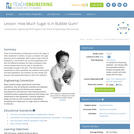
Most of the flavoring in gum is due to the sugar or other sweetener it contains. As gum is chewed, the sugar dissolves and is swallowed. After a piece of gum loses its flavor, it can be left to dry at room temperature and then the difference between its initial (unchewed) mass and its chewed mass can be used to calculate the percentage of sugar in the gum. This demonstration experiment is used to generate new questions about gums and their ingredients, and students can then design and execute new experiments based on their own questions.
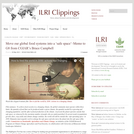
To achieve food security in a changing climate, the global community must operate within three limits: the quantity of food that can be produced under a given climate; the quantity needed by a growing and changing population; and the effect of food production on the climate. At present the planet operates outside that safe space, as witnessed by the enormous number of people who are undernourished. If current trends in population growth, diets, crop yields and climate change continue, the world will still be outside this ̢ĺŰĺ÷safe operating space̢ĺŰĺŞ in 2050. Humanity must urgently work to enlarge the safe space and also move the planet into the safe space (film credit: Commission on Sustainable Agriculture and Climate Change, an initiative of the CGIAR Research Program on Climate Change Agriculture and Food Security, in collaboration with University of Minnesota Global Landscapes Initiative).